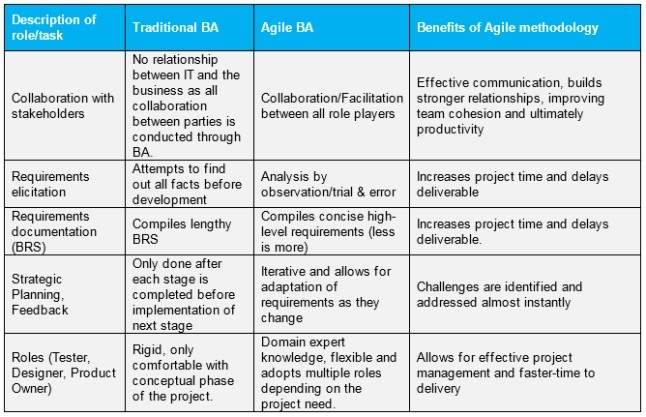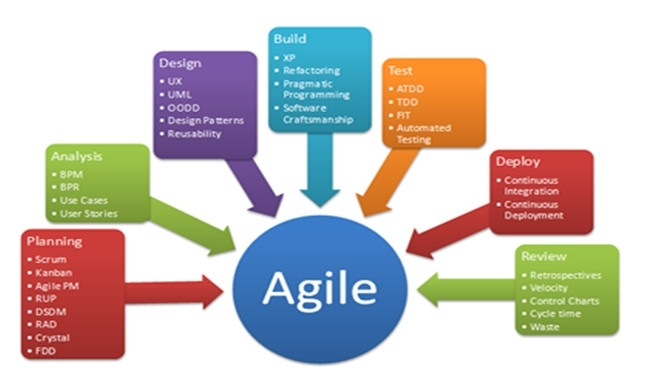
The use of technology and or automation to achieve a business' stated objectives very often positions a business in a favourable competitive position within the industry.
It is however important that when considering the use of technology to improve business efficiencies and lower operational costs, organisations need to complete a business analysis exercise which correctly maps the entire end-to-end process.
Failure to do this effectively very often results in a high rate of failure for such projects and is very costly in the long-term says Daniel Gombe, CEO of Sochin Technologies.
The following are common pitfalls for IT projects as identified by Azmi Jafarey, www.networkcomputing.com:
1. Putting technology before business needs
In such cases, the business identifies the technology solution, also called the "how" before understanding the "why" and "what" of the business need.
2. Starting too soon
The assumption that technology can overcome anything often leads to teams getting started on a project without fully understanding the scope.
3. Scope-creep (also called never-ending scope)
The core of the project should always take priority far above the flotsams and jetsams of extras. This will significantly reduce complexities that potentially add to the project costs and missing of deadlines.
The primary role of the business analyst
The missing link that is responsible for eliminating the pitfalls discussed above is the critical liaison role played by the BA. A Forrester report in 2008 shed light on this little known but critical role and described BA as the "role that can unite the business and IT on enterprise projects, systems development and business strategy".
The same report found that that those BAs that were most successful were the ones who could communicate, facilitate and analyse. The development of business analysis as a professional discipline has extended the role and responsibilities of the business analyst (BA). Increasingly, BAs are engaged at an early point. They investigate ideas and problems, formulate options for a way forward and produce business cases setting out their conclusions and recommendations.
As a result, the responsibility for advising organisations on effective courses of action lies with BAs, and their work precedes that of the project manager. The early engagement of BAs also places a critical responsibility upon them - the need to ensure that all business changes are in line with the mission, objectives and strategy of the organisation. This business context is the key foundation for understanding and evaluating all ideas, proposals, issues and problems put forward by managers.
Broadly speaking, the BA has responsibility for the following areas:
* Identifying the tactical options that will address a given situation and will support the delivery of the business strategy;
* Defining the tactics that will enable the organisation to achieve its strategy;
* Supporting the implementation and operation of those tactics;
* Redefining the tactics after implementation to take account of business changes and to ensure continuing alignment with business objectives.
The responsibilities highlighted above translate into the following positive returns that make the BA an integral part of an IT project:
1. Reduction in the cost of implementation
At a basic level, business analysis reduces the overall costs for the project. This concept is often counter-intuitive for managers unfamiliar with business analysis. If we look at the ROI formula and illustration below, there are really only two components that a BA can impact:
![Return on Investment = [Value achieved through the solution] - [Cost of the solution] Source: www.bridging-the-gap.com](https://www.itweb.co.za/static/pictures/2015/12/resized/-fs-Agile-Sochin-1-FS.xl.jpg)
2. Reduction in rework
The BA helps focus the team on the right requirements, which in turn reduces the amount of unnecessary change.
3. Reduction in requirements churn
Stakeholder time is valuable, but without someone in the business analyst role, stakeholders might spend excess time in unproductive discussions. An analyst can help drive a logical and efficient decision-making processes, track open issues, and document discussions, reducing the amount of time spent rehashing previous discussions.
4. Discovering more cost-effective solutions
When the business analyst is licensed to find any number of solutions to a problem, specifically solutions that may not involve information technology, the business analyst actually might help reduce costs by finding more cost-effective solutions.
5. New business needs or requirements are discovered
A business analyst does not just pick up or "gather" the requirements. Most often a business analyst must actively mine for or discover the requirements. By actively discovering requirements, the business analyst helps the business come to an improved understanding of what is needed from the solution to be successful.
6. Providing a framework in which an IT team can scale
As an organisation grows, so does the number of stakeholders, projects and implementers. As this happens, the natural patterns of communication that worked for a smaller team tend to fall apart. Business analysis is a key component in enabling a small team to scale to a larger one, thereby increasing the benefits realised because more projects can be successful investments.
The evolving role of the business analyst (BA)
More organisations are beginning to embrace the Agile approach because it's synonymous with adaptability and a faster time-to-market. To remain competitive and profitable, organisations are rapidly realising that they have to find new ways of delivering value to their customers at the speed of lightning. This has meant a corresponding change in the role of the BA from waterfall or traditional to Agile. The key difference between these two is that the former works in a linear way which can be rigid (stage-based) while the latter is more lightweight and quickly adapts to change (sprint-based). This is further illustrated below:

In summary, the qualities of an agile BA are;
* Flexibility/adaptability;
* Goal-oriented;
* Responsiveness;
* Creativity;
* Innovative thinking;
* Leadership;
* Acceptance of change;
* Empathetic; and
* Dependant on individuals and interactions.
This is aptly demonstrated in the diagram below.

Share